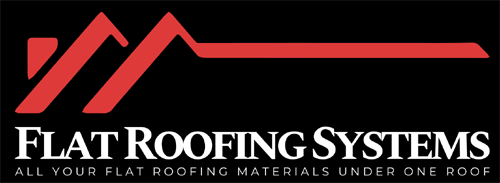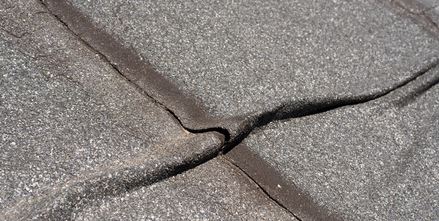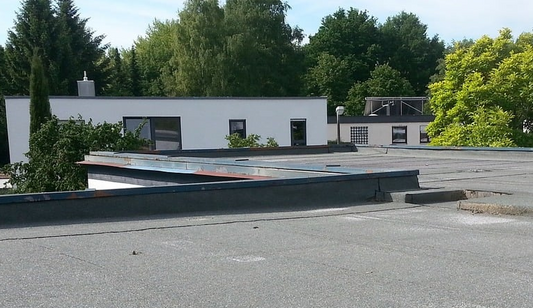You're about to discover the ins and outs of GRP fibreglass flat roofing, a strong and durable material perfect for areas prone to high winds or severe weather conditions. GRP fibreglass roofing is lightweight, 100% recyclable, and can withstand environmental challenges.
It's commonly used for flat roof designs and offers a range of benefits, including a longer lifespan and higher resistance to extreme temperatures. You'll soon learn how to install and maintain this roofing material, from preparation and application to regular cleaning and inspections.
Key Points
- GRP fibreglass roofing is a strong and durable option for flat roofs, suitable for areas with high winds or severe weather conditions.
- It offers a range of benefits, including being 100% recyclable, lightweight, and having a longer lifespan than other roofing materials.
- The installation process involves multiple steps, including applying primer, fibreglass matting, and topcoat to ensure a secure and durable bond.
- Regular cleaning and inspections are necessary to maintain the roof's performance and longevity, which can last up to 30 years or more with proper care.
Understanding GRP Fibreglass Roofing
When considering a durable and sustainable roofing solution, you'll likely come across GRP fibreglass roofing, a type of roofing that has gained popularity in recent years due to its impressive strength, versatility, and eco-friendliness.
This type of roofing is made from glass-reinforced plastic, which makes it incredibly strong and suitable for areas prone to high winds or severe weather conditions.
One of the biggest advantages of GRP fibreglass roofing is its lightweight nature, making it easy to transport and install.
Plus, it's 100% recyclable, making it an environmentally friendly choice.
GRP fibreglass roofing is commonly used for flat roof designs, and its unique composition makes it an ideal choice for withstanding environmental challenges.
It can resist corrosion from rainfall, withstand harsh sunlight, and maintain its structural integrity in various environmental conditions.
This means you can rely on GRP fibreglass roofing to keep your building safe and secure, even in the toughest weather conditions.
With its exceptional durability and weather resistance, GRP fibreglass roofing is a sustainable and cost-effective choice for your construction project.
Benefits of GRP Fibreglass Roofing
As you consider the advantages of GRP fibreglass roofing systems, you'll likely be impressed by its numerous benefits, which make it an attractive choice for construction projects.
One of the most significant advantages is its strength and durability, making it suitable for areas with high winds or severe weather conditions. Additionally, fibreglass is 100% recyclable, making it an environmentally friendly option for homeowners and builders.
You'll also appreciate the lightweight nature of GRP fibreglass roofing, which makes it easy to transport and install, reducing the overall cost of the project.
Another benefit is its longer lifespan and higher resistance to extreme temperatures compared to other roofing materials, such as rubber and asphalt. This means you'll spend less on maintenance and repairs in the long run.
Speaking of maintenance, GRP fibreglass roofing is a low-maintenance option, requiring only regular cleaning and inspections to guarantee its longevity and performance.
GRP Roofing Installation Procedures
By the time you're ready to install your GRP fibreglass flat roof, you'll want to verify a thorough and meticulous process to guarantee a durable and long-lasting result.
The installation process begins with the removal of the old roofing material, followed by a thorough cleaning and application of a layer of primer to the surface area.
Next, fibreglass matting is laid down, followed by another layer of primer, and the fibreglass is secured to the roof with adhesive to certify a strong and durable bond.
The process involves multiple steps to certify a secure and durable roof, including the application of a basecoat, topcoat, and finishing touches to achieve a watertight seal.
To guarantee a successful and long-lasting installation, you must adhere to the manufacturer's instructions and guidelines for the specific GRP roofing kit being used.
Remember, attention to detail is key in this process.
Caring for Your GRP Roof
You'll want to prioritize regular maintenance to keep your GRP fibreglass flat roof in top condition, guaranteeing it continues to provide a watertight seal and long-lasting protection.
This is because GRP roofing is a significant investment, and proper care will help extend its lifespan.
To get the most out of your GRP roof, follow these essential care tips:
- Regularly clean your GRP roof to remove debris and dirt that can cause damage and affect its performance.
- Inspect your GRP roof regularly for signs of damage or wear and tear, and repair any issues as soon as possible to prevent further deterioration.
- Use gentle cleaning methods such as a pressure wash with a mild detergent to maintain your GRP roof's appearance and performance.
Make maintenance a habit to certify the longevity and performance of your GRP roof, which can last up to 30 years or more with proper care.
GRP Fibreglass Roofing Components
Your GRP fibreglass flat roof consists of several critical components that work together to provide a watertight seal and long-lasting protection.
At the core of your roof is the GRP laminate, a robust and flexible layer made from a combination of resin and glass fibres.
This laminate is reinforced with a layer of chopped strand mat, which adds strength and durability to the roof.
On top of the laminate, you'll find a coat of topcoat, a specially formulated resin that provides UV resistance and colour stability.
To guarantee a secure bond between the roof and the building, a layer of bonding paste is applied to the substrate before the laminate is installed.
Finally, trims and flashings are used to seal the roof's edges and corners, preventing water ingress and guaranteeing a smooth, watertight finish.
Alternatively, you can purchase a complete GRP flat roof kit containing everything you need for your project.
GRP Roofing Tools and Materials
To guarantee a successful GRP fibreglass flat roof installation, several essential tools and materials are required, including specialized equipment, high-quality resins, and durable glass fibres. You'll need to invest in the right gear to certify a professional finish and a long-lasting roof.
GRP rollers are used to apply and spread the resin evenly across the roof surface.
A fibreglass mat cutter is a tool that helps you cut the fibreglass mat to the correct size and shape for your roof.
A resin mixer is required to blend the resin and hardener together accurately.
Safety equipment is also essential, including protective gear like gloves, goggles, and a mask to prevent injury and exposure to chemicals.
GRP Fibreglass Roofing Advantages
Durability and versatility make GRP fibreglass roofing a top choice for building owners seeking a long-lasting, low-maintenance solution. You'll appreciate the numerous advantages it offers, making it an attractive option for your roofing needs.
One of the most significant benefits is its resistance to weathering, ensuring your roof remains secure and leak-free even in harsh conditions.
GRP fibreglass roofing is also incredibly durable, with a lifespan of up to 30 years or more, depending on the quality of installation and maintenance.
Additionally, it's resistant to corrosion, making it an ideal choice for buildings near coastal areas or those exposed to high levels of pollution.
You'll also appreciate the ease of maintenance with GRP fibreglass roofing.
It's easy to clean and repair, reducing the need for frequent replacements and saving you money in the long run.
Moreover, GRP fibreglass roofing is environmentally friendly, as it can be recycled and reused, reducing waste and the carbon footprint of your building.
With its combination of durability, versatility, and eco-friendliness, GRP fibreglass roofing is an excellent choice for building owners seeking a reliable and sustainable roofing solution.
Rounding Up
Now you know the ins and outs of this durable, waterproof, and cost-effective roofing solution and are well-equipped to make an informed decision.
With its numerous advantages, it's no wonder GRP fibreglass roofing is a popular choice among homeowners and builders alike.




